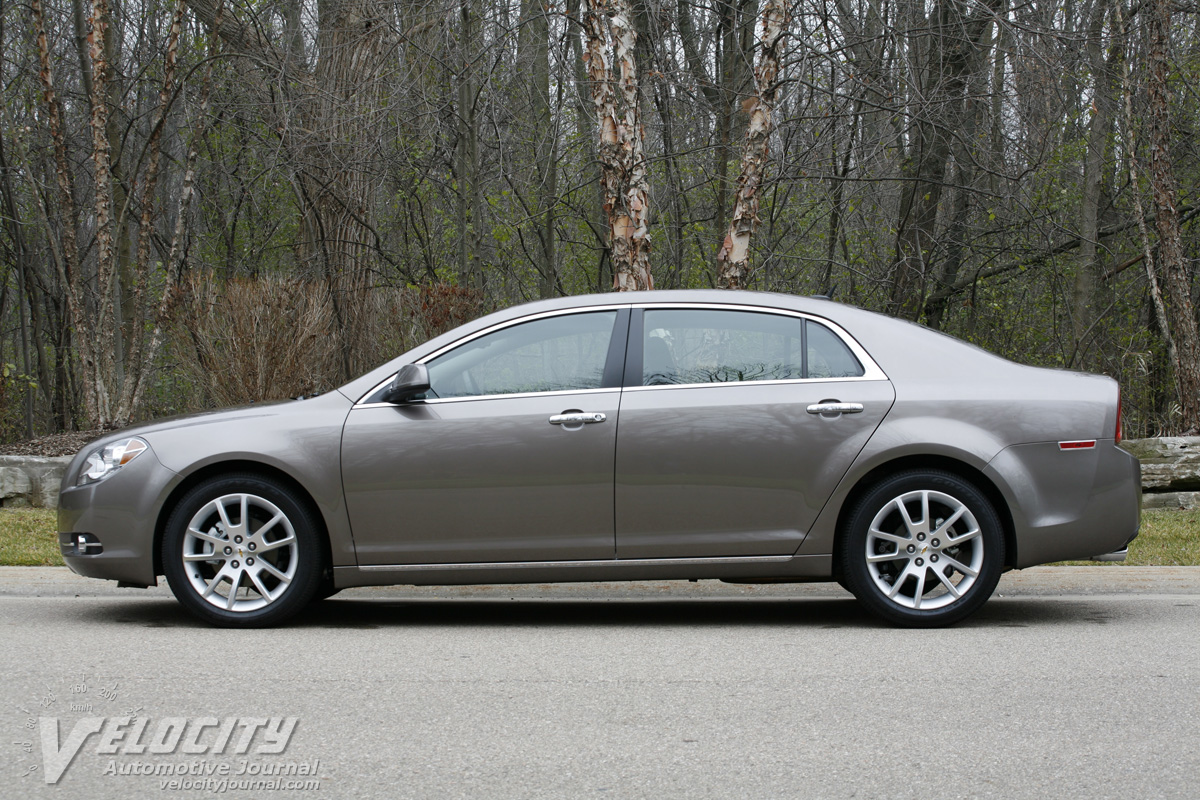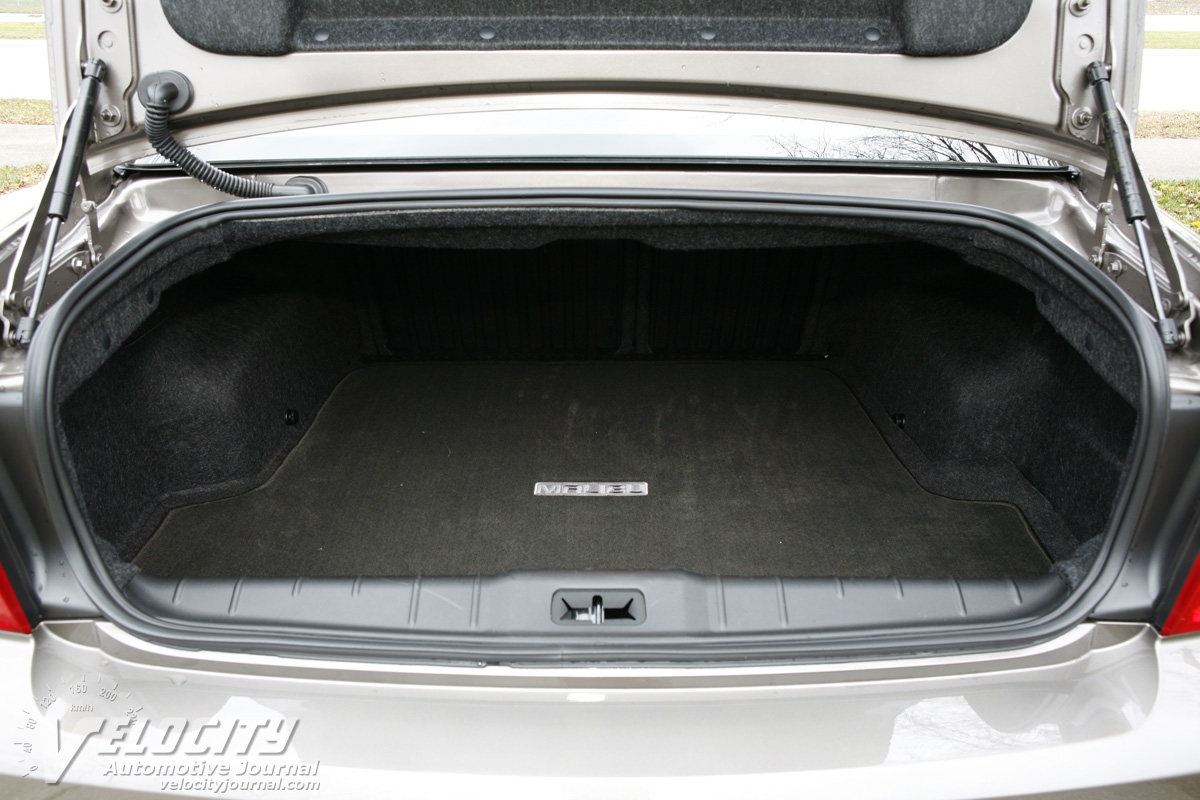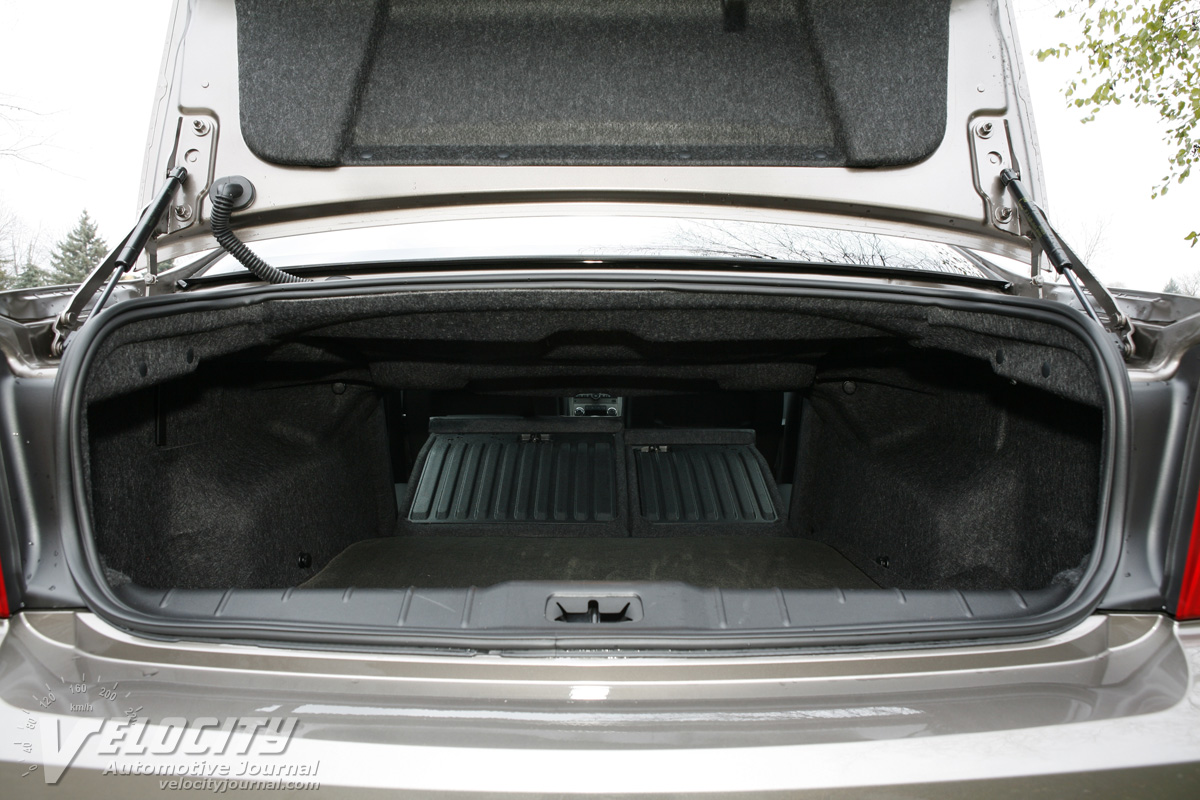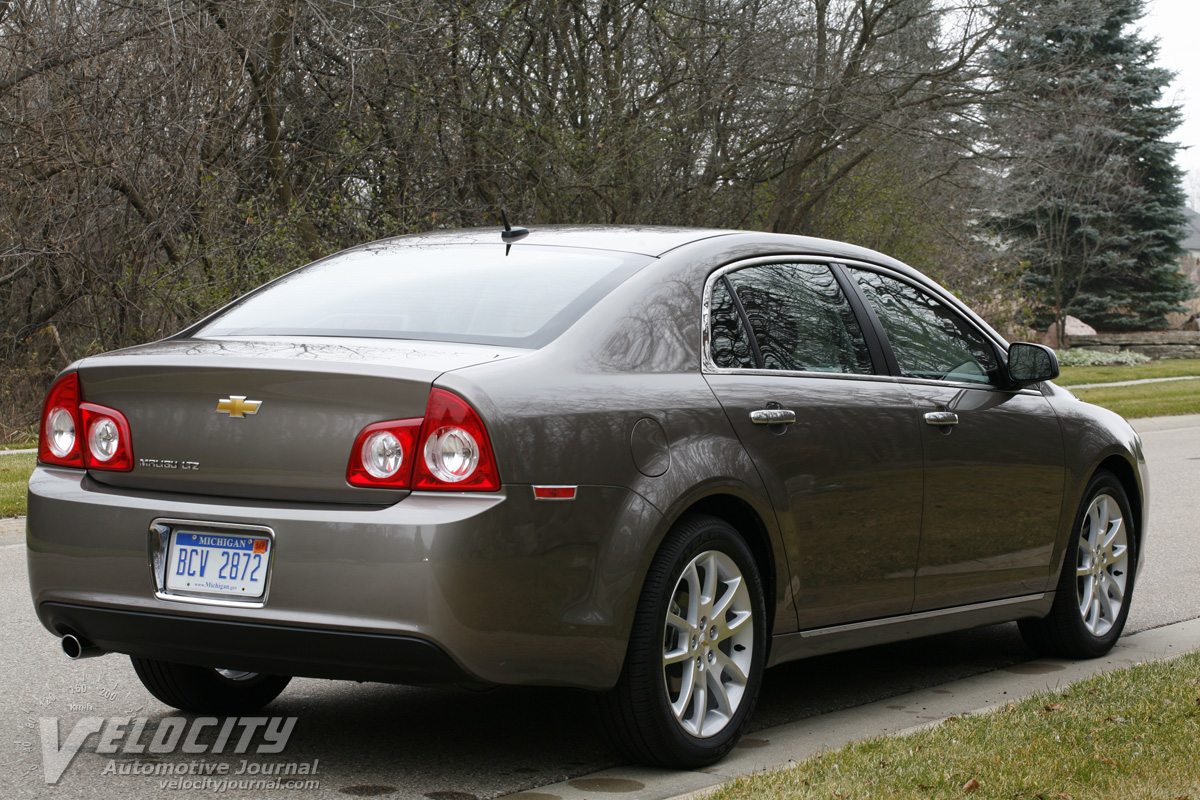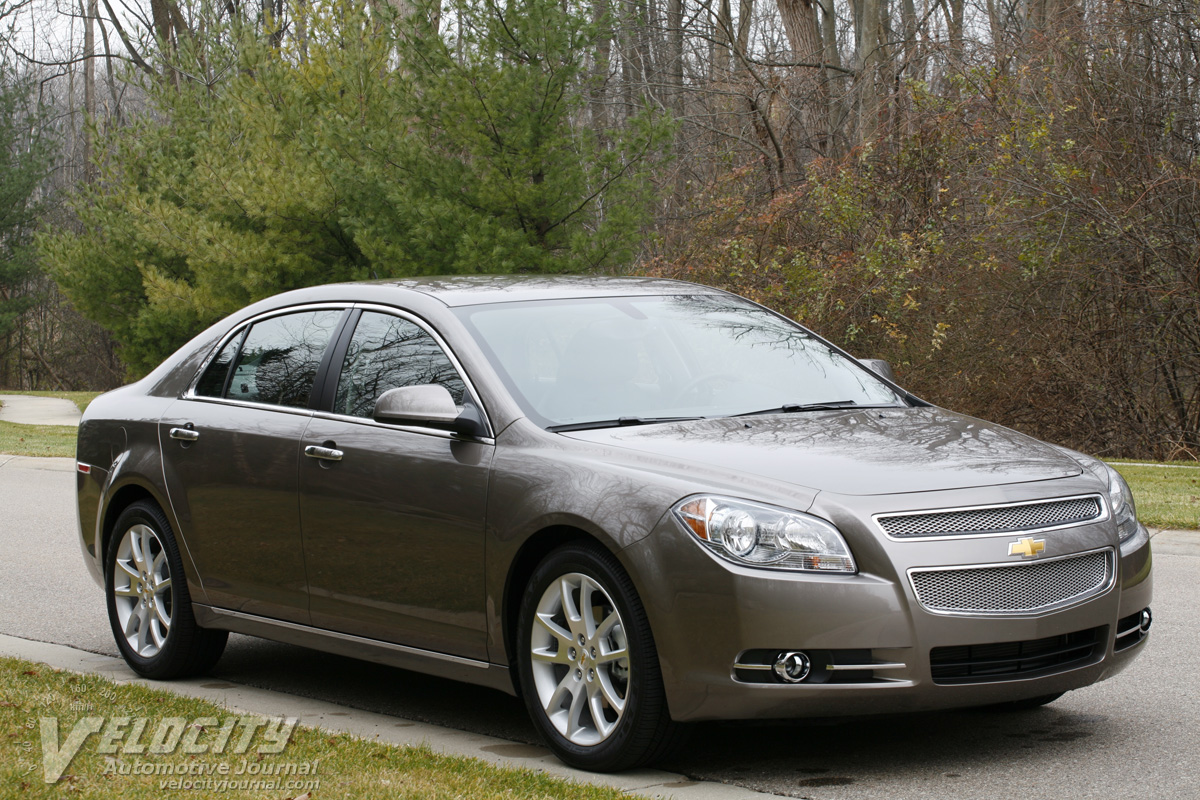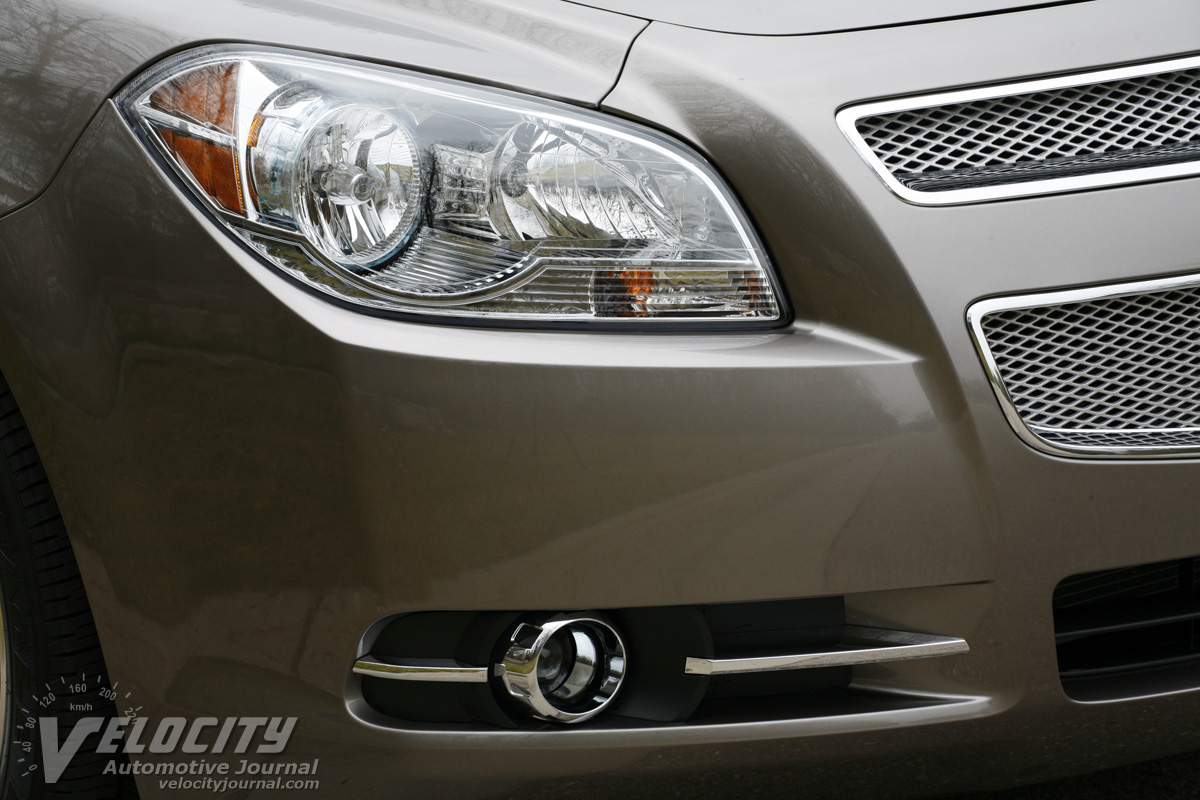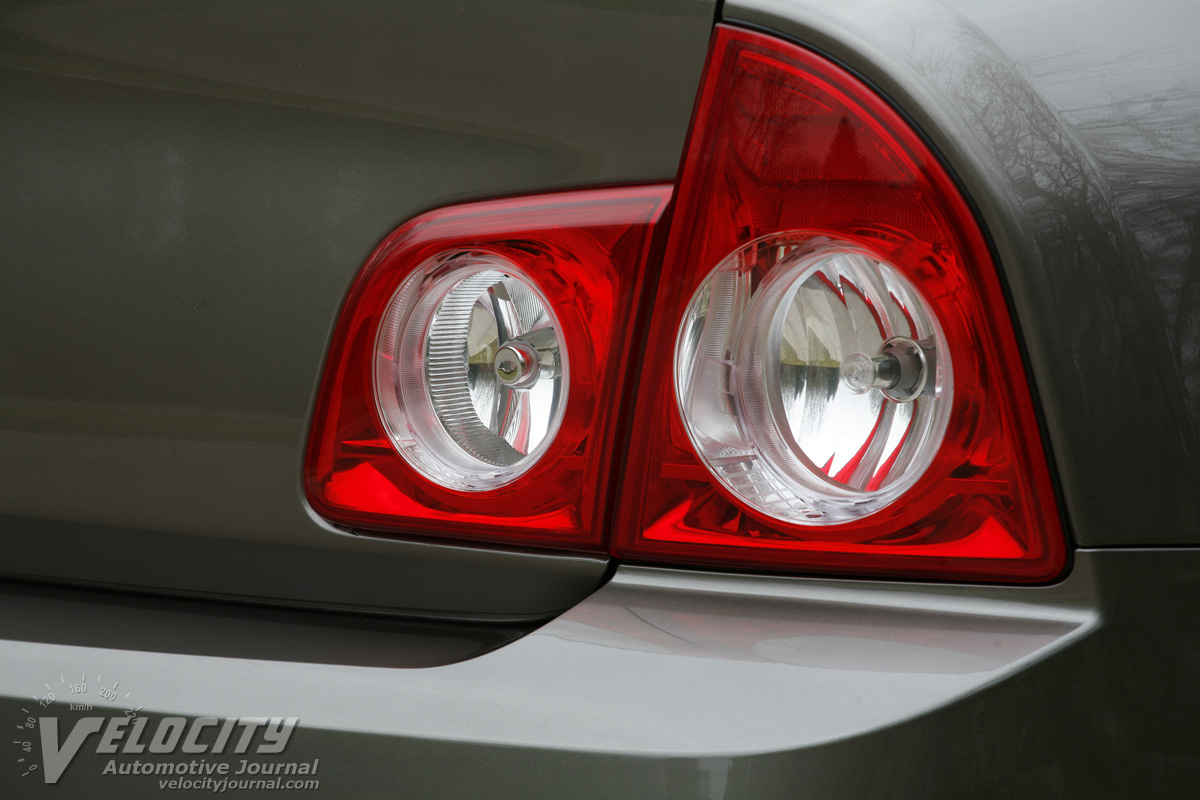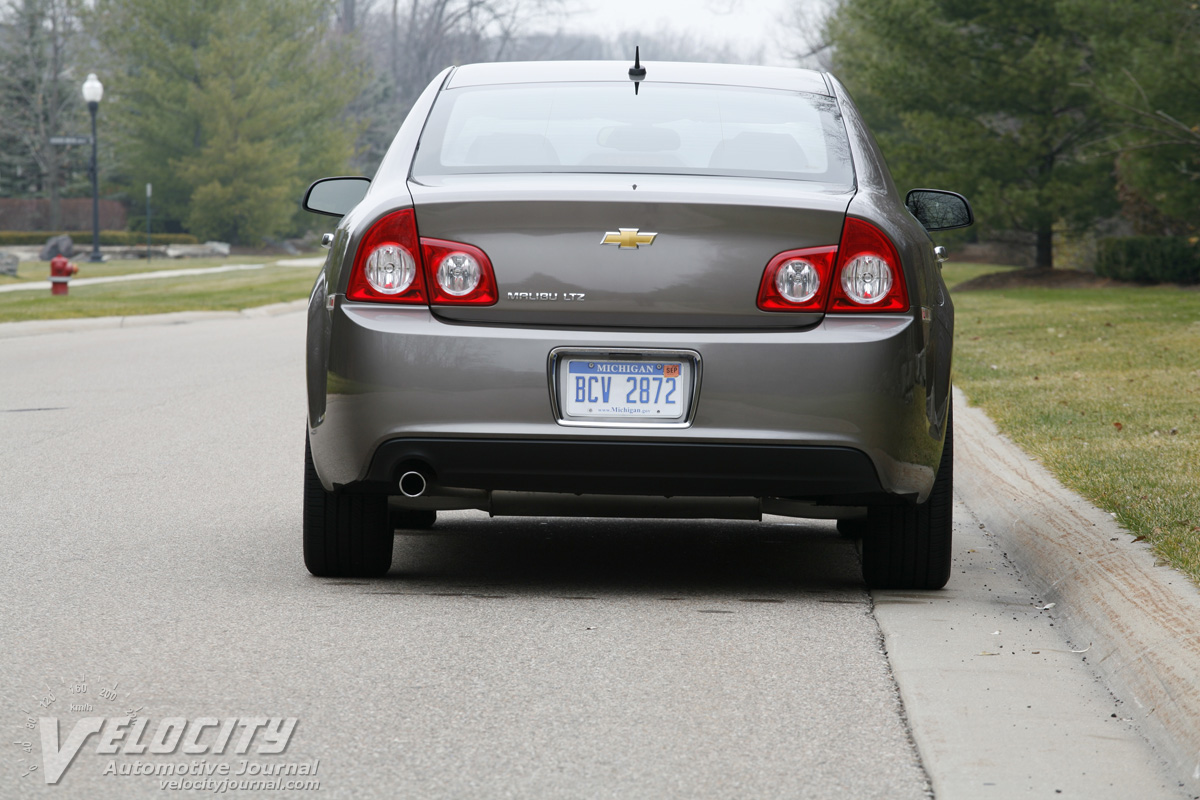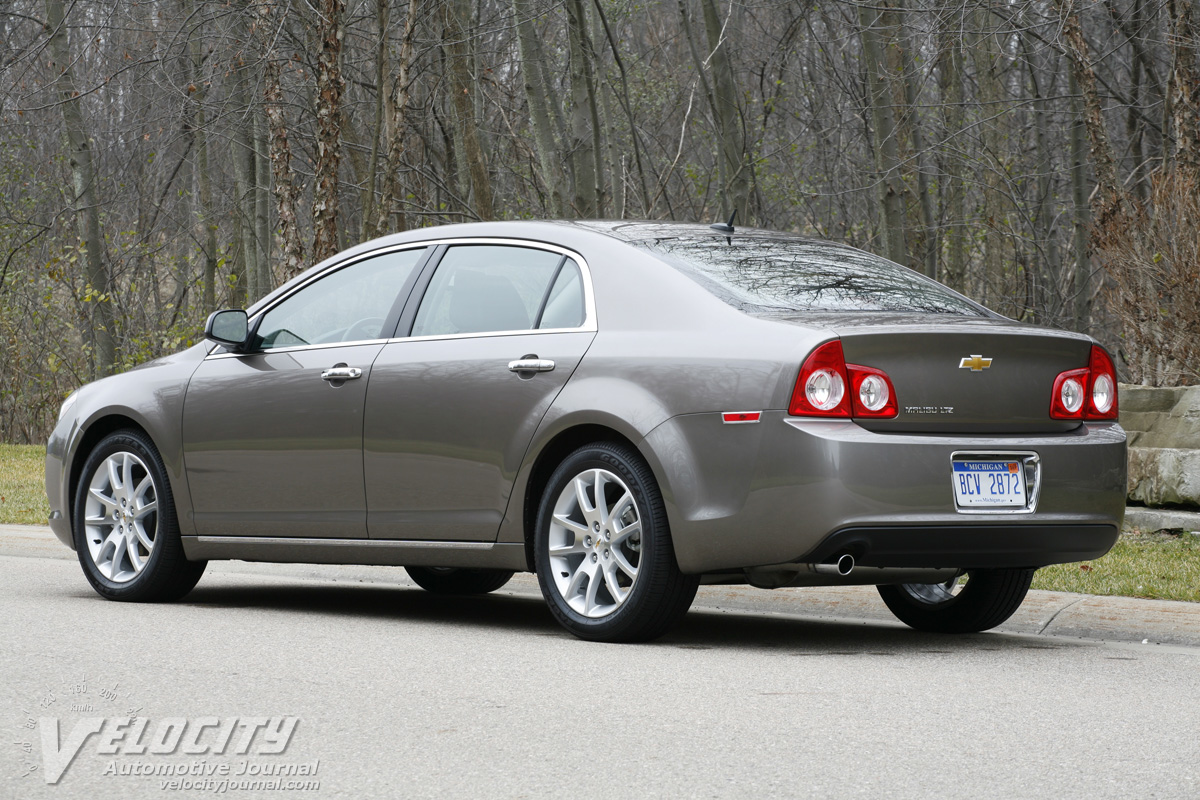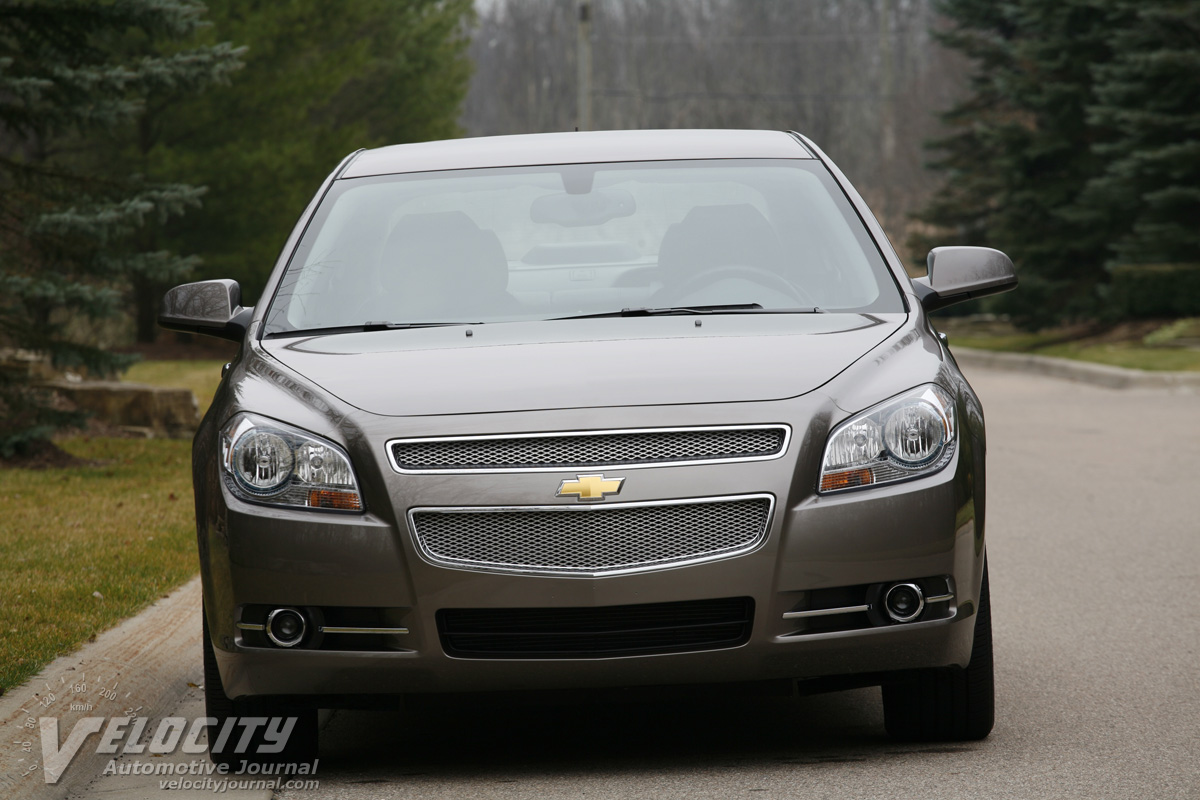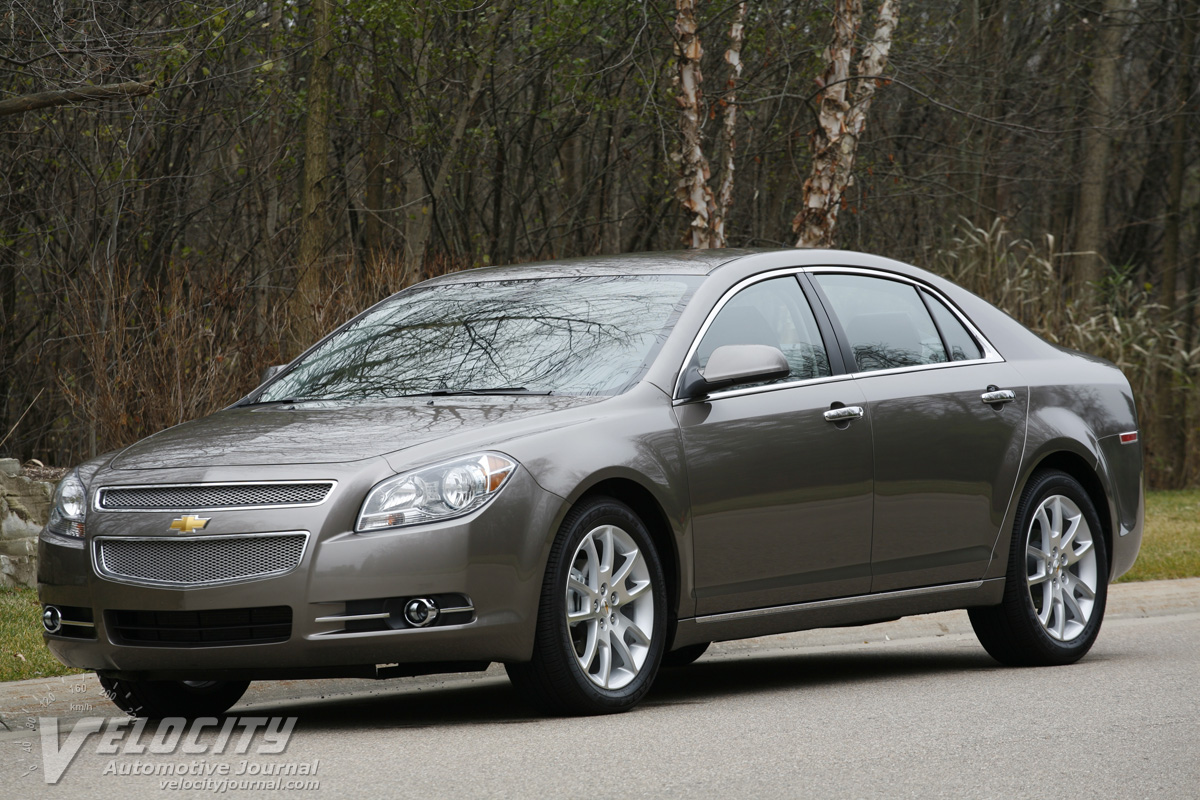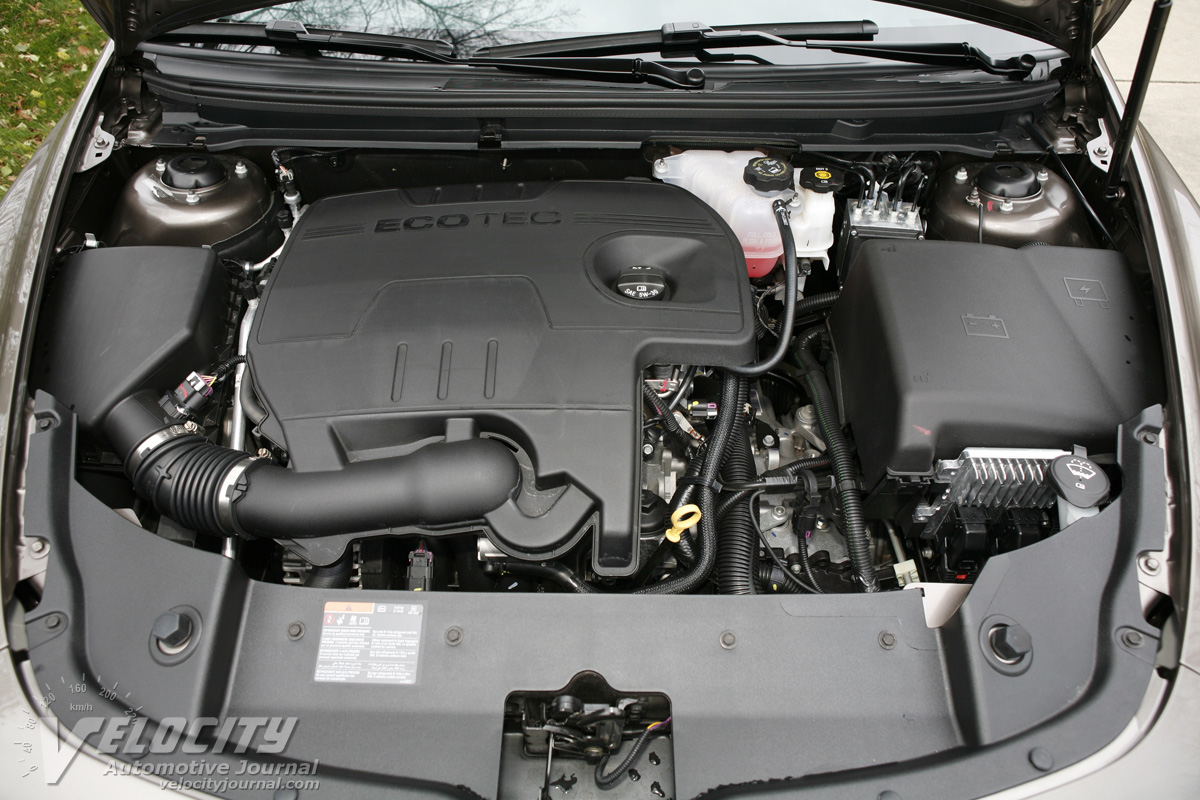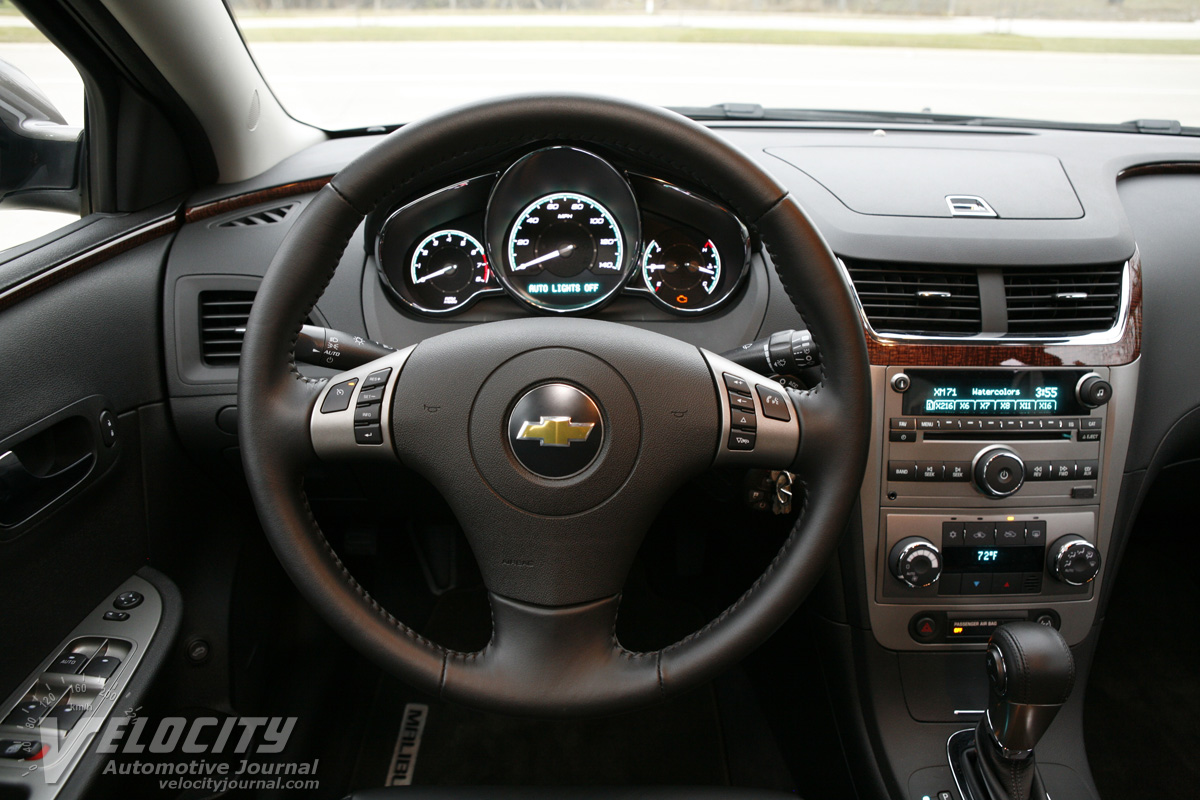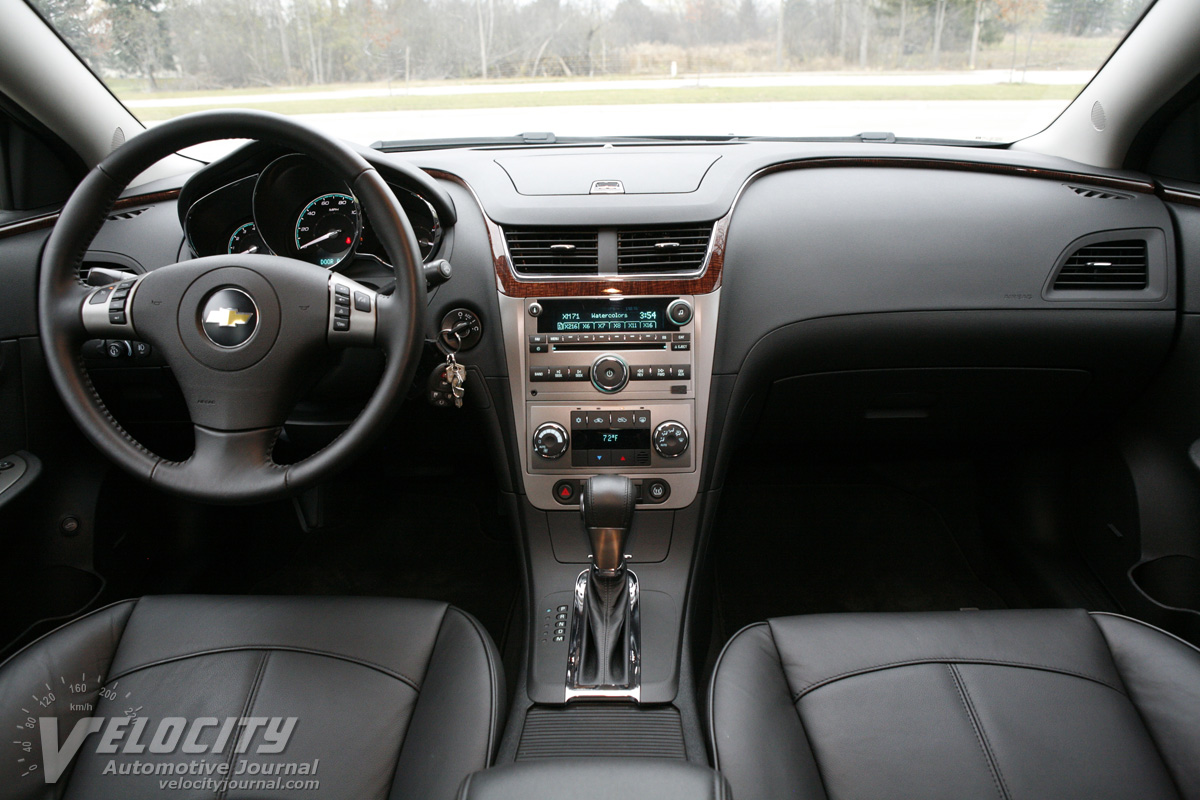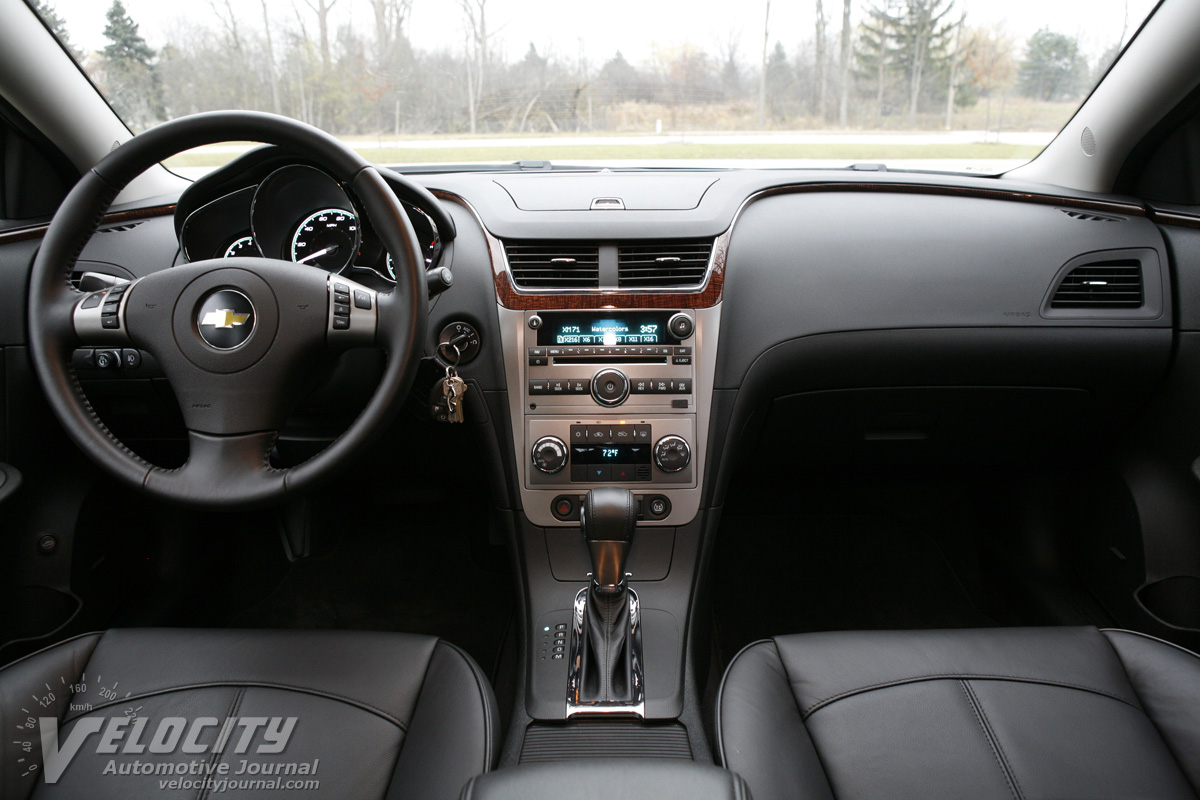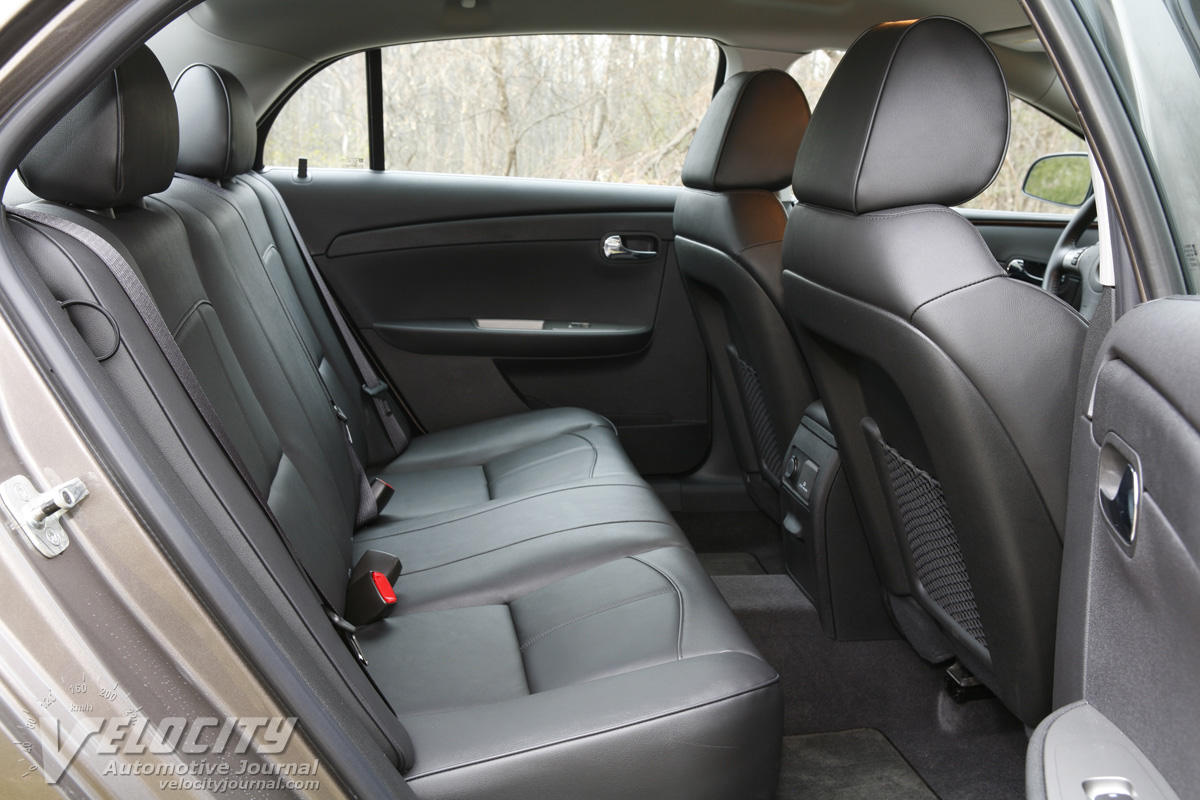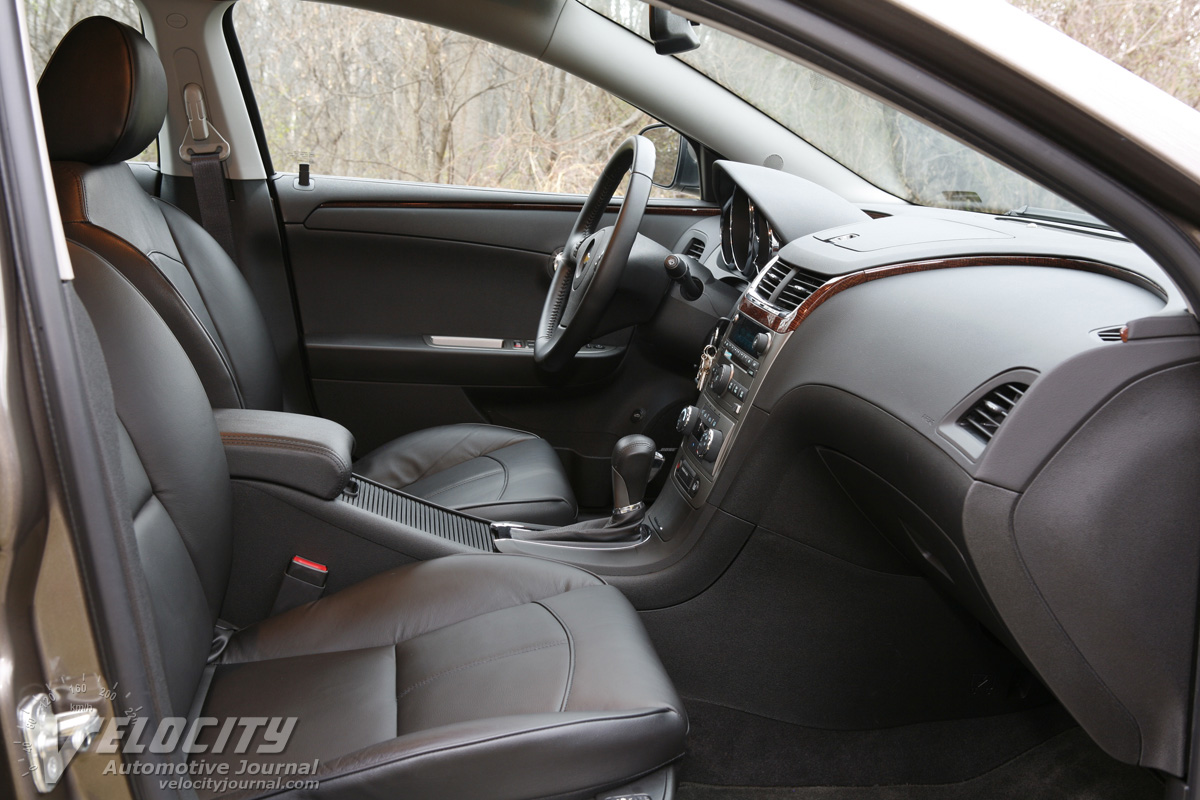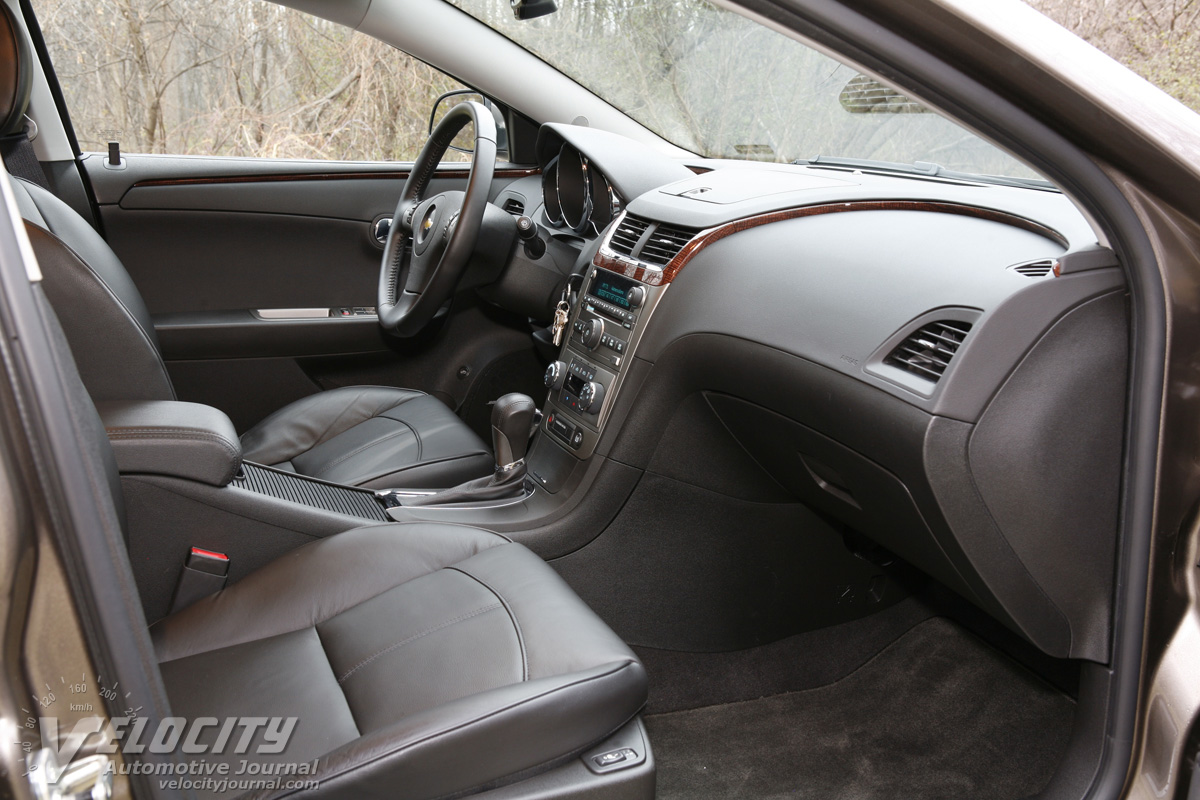2011 Chevrolet Malibu LTZ
11/24/2010
Shahed Hussain
Until the recent introduction of the compact Cruze, the Malibu was Chevrolet's most contemporary sedan, and critical to its revival in the midsize segment. While the Fusion and Sonata have been redesigned in the interim, Chevrolet has only provided incremental updates to its popular 4-door.
Chevy offers the Malibu in four trim levels starting at the base LS, to the midlevel 1LT and 2LT, and top LTZ. All 2011 Malibus are powered by a standard 2.4L inline-4 mated to a 6-speed automatic; prior LS models used a 4-speed gearbox. An optional 3.6L V-6 and 6-speed automatic combination is available on the 2LT and LTZ models. Pricing begins at $21,975 (LS) and ranges up to $27,015 (LTZ). Our test vehicle was a lightly optioned Malibu LTZ equipped with the useful $100 compact spare tire (which replaces the tire sealant and inflator). Including the $720 destination charge, the sticker price totals up to $27,835. Notable options include the 3.6L V-6 ($1,595), power sunroof ($850), and rear spoiler ($385).
Unlike Chevrolets from just a few years ago, the Malibu's interior is an environment full of eye-pleasing surfaces and textures. On the leather-wrapped steering wheel are audio, phone, and cruise control buttons for convenient access to commonly used functions. Gauges consist of an 8,000 RPM tachometer, 140-MPH speedometer, and fuel level and coolant gauges. An unusual bonus is a 120V power outlet in the center stack, handy for recharging notebook computers and other AC-powered electronics. The AM/FM/CD/XM audio system also includes a USB port for MP3 players. Bluetooth is also standard for hands-free mobile phone service. A dot-matrix vehicle information display shows fuel consumption, tire pressure, and other data. Three large round knobs and clearly marked buttons control the HVAC system; while the audio system has a central knob with buttons symmetrically arranged on each side. Instead of an optional satellite navigation display, the Malibu uses GM's available OnStar service for turn-by-turn navigation. An inexpensive portable GPS system may be a superior and more cost-effective alternative for most owners.
As expected in a family sedan, the Malibu includes more cupholders than passengers: a total of 6 cupholders are distributed between the front and rear seats. Storage bins on the door pockets, dashboard, and center console provide plenty of space to conceal electronics and other valuables.
The Malibu LTZ upgrades the standard cloth upholstery with leather seats and power adjustments (8-way driver's seat and 6-way settings for the front passenger). Both front seats are heated, a necessity for colder climates. Despite adequate support and comfort, the textured leather feels slippery to the touch. Rear passengers benefit from outstanding legroom, but the seatbacks lack adequate padding, probably due to the hard plastic backing behind the seats.
GM 4-cylinder engines have rarely matched similar powerplants from Asian or European manufacturers in refinement, but this 2.4L Ecotec is an outstanding exception. Noise levels are muted even at full throttle; more importantly, this DOHC Ecotec sounds expensive, with none of the annoying induction noise or vibration that plagued previous GM inline-4 engines. The 169-bhp @ 6400 RPM and 160 lb.-ft. @ 4500 RPM from the 2.4L places the Malibu at a slight disadvantage relative to its domestic and Asian competition. Low RPM throttle response is slightly sluggish, but the above 3,000 RPM the 2.4L becomes more energetic, especially as the tachometer approaches the torque peak.
Most midsize sedans have migrated to 6-speed automatics as standard, so Chevrolet adopted the 6-speed automatic for all 4-cylinder models. The Hydra-Matic 6T40 shifts unobtrusively, and its additional two gears noticeably improve midrange acceleration compared to the previous 4-speed gearbox. EPA highway fuel consumption improves to 22/33 MPG to (city/hwy.); the three MPG increase in the highway rating is likely due to the new transmission. Our test vehicle (with less than 3,000 miles on the odometer) averaged about 25 MPG in mixed urban and highway driving. On a road trip from Detroit to Cleveland, we managed just over 26 MPG.
For a mainstream family sedan, Chevrolet engineers found the just the right balance of steering feedback vs. isolation: the Malibu's steering has enough feel to communicate road textures, but without undue kickback or vibration to cause fatigue. Malibus equipped with the 2.4L engine get electrically-assisted power steering, which we found indistinguishable from a conventional hydraulic system. Although understeer in normal driving is minimal, we didn't really push the chassis very hard. GM also managed to damp out torque steer to nearly undetectable levels. All Malibus are equipped with 4-wheel disc brakes. ABS, traction control, and StabiliTrak electronic stability control are standard across all models. Despite the all-disc brake setup, the numb pedal lacks feedback. On the highway, the Malibu cruises quietly, with minimal engine or wind noise, although some tire noise is noticeable on concrete surfaced roads. As expected from a family sedan, the compliant suspension tuning absorbs bumps and potholes without complaint. The Malibu LS doesn't aspire to be a sport sedan, yet it won't bore you with an uninvolving driving experience either.
The Malibu is still a reasonable choice among affordable midsize sedans. However, the revised Accord, Fusion, and Sonata may relegate the Malibu into a minor player in the overcrowded family sedan segment. Although Chevrolet has upgraded the Malibu's standard features to remain competitive, several domestic and Asian alternatives offer more powerful engines and similar fuel consumption for essentially the same money. While this should not deter most mainstream customers, enthusiasts on a budget may prefer another choice.

